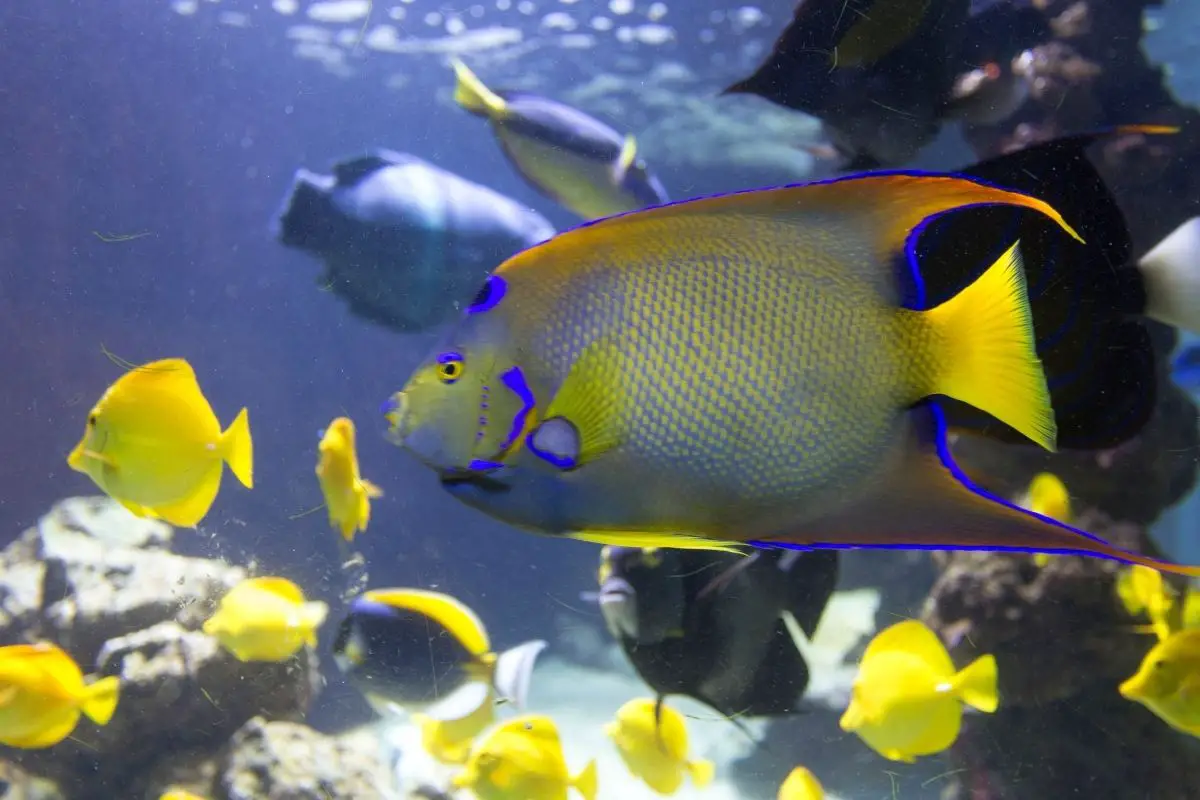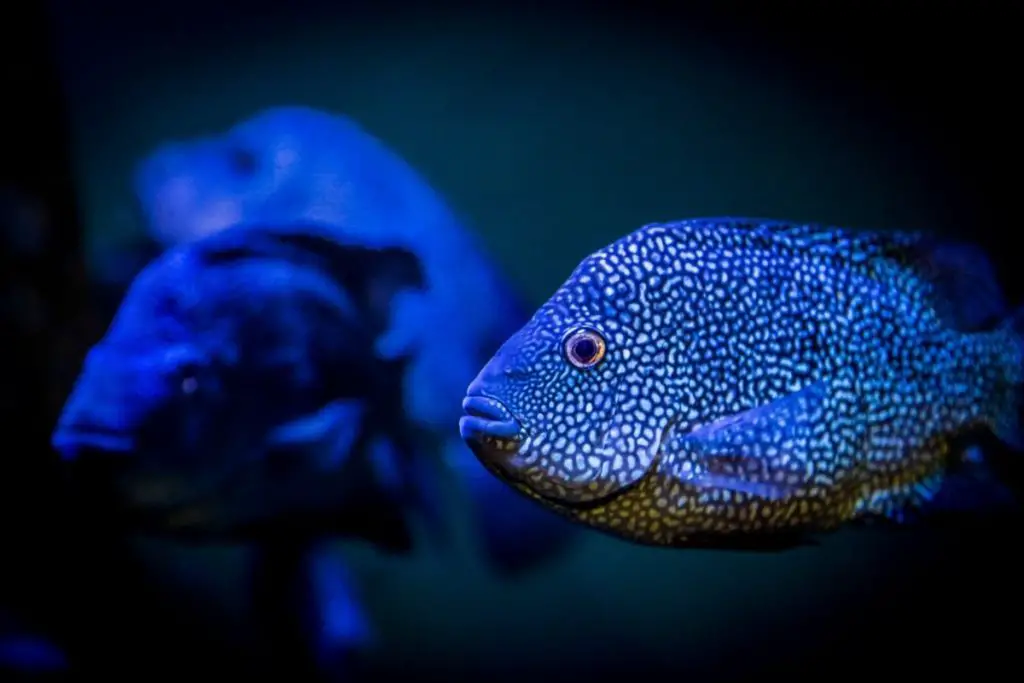The subject of whether fish can see color? or not still causes debate, even with the advancements in technology over the last few decades. Simply put, it’s impossible to know exactly what a fish sees without… well, being a fish.
Or at the very least ask a fish what it sees. Wait, have they tried that?
The majority of studies that have been done on this subject involved physical examinations of fish and exposing the eyes to certain chemicals. Some studies have also tried to determine how fish react to visual stimuli.
Ultimately, though, the answer to the question ‘Fish can see color?’ is a tricky one to answer. The following article will break down that answer in detail.
What Do Fish See?
As we mentioned, there’s no way to know exactly what a fish sees- especially since it’s believed that different types of fish possess varying capabilities when it comes to their sight.
Even the most accurate results obtained in a laboratory are unlikely to match what a fish sees out in the real world.
Scientists do believe, though, that most fish can see a clear and focused image, and are also capable of detecting motion, as well as detecting contrast.
Some experiments have suggested that fish need very little light to make out certain colors. And on the subject of colors, other findings have suggested that certain fish may favor certain colors- but more research is required in this area.
While you might assume that fish can see colors purely because you tend to catch more fish using brightly colored bait, there’s more that attracts the fly than just the color. There’s also the shape, the motion, and even the scents of certain baits. All these factors will make a fish more likely to bite.
While the majority of fish are believed to have a decent amount of vision, their sense of sight pales in comparison to their sense of smell, as well as their ability to perceive vibrations.
The color of your bait matters far less than the smell, as fish usually use their sense of smell to initially detect prey, only using their vision to go for the bite.
Most fish are capable of seeing in low-light conditions, or when they’re in dirty water. It’s believed that some fish can even see for fairly long distances. Tuna is an example of a fish with surprisingly good eyesight. Another detail worth noting is that while fish tend to be nearsighted, sharks are believed to be farsighted.
Color is visible to fish?

Tyger Leader is reader-supported and may earn a commission when you book or purchase using our links. Learn more about our affiliate disclaimer here.
Fish are capable of seeing colors, but for the most part, it’s only colors that are typical for their habitat. Fish that live near the shore are more capable of seeing colors, while fish that live in deep water have far less color vision because they’re only really exposed to dark blues and greens.
While there’s been a wealth of research done on the effectiveness of baits that use certain fish can see color? There’s still no clear answer. It’s an interesting discussion, though, and has led to many fascinating finds.
For example, studies done on sticklebacks while in their spawn season showed that male sticklebacks are particularly aggressive towards decoys whose bellies are bright red because male sticklebacks have the same red bellies.
Similar studies showed that decoys that had extended bellies (meaning they looked like they were female fish that were carrying eggs) were also more likely to attract males.
There’s more to it than just the color and the shape, though; it’s worth noting that in the aforementioned study on stickleback males, the fish also seemed to be drawn to passing red cars that they could see from within their tanks.
Fish can also see certain colors that humans can’t see, such as ultraviolet.
Does The Color Of My Bait Increase The Chances Of A Bite?
The majority of gamefish pick out their prey by seeing the contrast of the fish against the rest of the environment. The level of this contrast can vary depending on several factors; the time of day, the clearness of the water, etc.
Is there one right answer for the best color to attract gamefish? Sadly not. But there are some things you can bear in mind when choosing which flies to use.
When you’re preparing for a fishing trip, you’ll likely know exactly where you’re going, and the general conditions you can be expecting.
If you’re fishing in deep waters, a blue fly is the best choice, because blue is the last color to be absorbed. Red, on the other hand, is the first color to be absorbed, so you should be using a color closer to that one if you’re fishing in shallow water.
You might be surprised to learn that when you’re fishing at night, black is one of the best colors you can use for bait. This is because it’s the most visible fish can see color? (Considering it’s not even really a color), and tends to give the best silhouette later in the evenings.
Are Any Fish Colorblind?
Fish can see color? In simple terms, the vision capabilities of a fish are determined by the types of cones within their eyes. These cones differ depending on the fish. For example, sharks and salmon have very different cones, and therefore they see very different things.
These cones are the same when it comes to human vision; we have M-cones, S-cones, and L-cones in our eyes. Their names come from the wavelengths of light that trigger them. We can tell the range of wavelengths we’re capable of seeing due to the sensitivity of these cells.
Some fish don’t have certain cones, meaning that they are indeed colorblind, and the science is the same for humans and most other animals. Whether an animal is colorblind or not is more of a spectrum than a straight yes or no.
Take dogs, for example. Those animals only have two specific kinds of cones in their eyes, and that’s what makes them red-green colorblind. This means that they struggle to distinguish between green and red- it doesn’t mean they can’t see colors altogether.
Conclusion
It’s complicated for fish can see color? Whether a fish is colorblind or not ultimately depends on whether its eyes are lacking particular cones. There’s no one-word answer to the question- it simply depends on the type of fish, just like some humans are colorblind but most are not.
When it comes to the colors fish can see, though, the answer is a little clearer. Generally, fish that live near the shore are capable of seeing more colors, because there’s a far larger variety of colors by the shoreline. Fish that have evolved far from the shore, however, fish can see color? see fewer colors, because they’ve only been exposed to mostly dark greens and blues.



